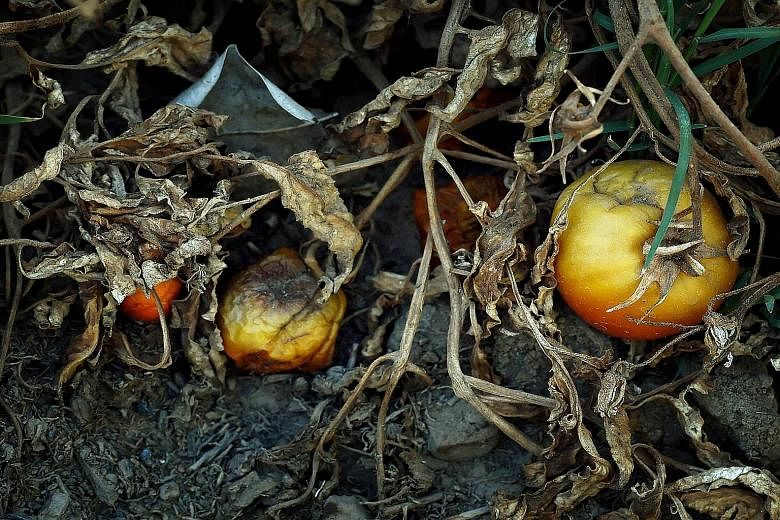SANTA CRUZ (California) • Cookbook writer Andrea Nguyen knows that making pho in a pressure cooker is not the solution to California's drought. Still, developing a reasonable version of the Vietnamese noodle soup that can be made in less than an hour, with half the water, matters to her these days. "We're all trying to do what we can. It's all about consciousness," she said.
Across California, home cooks and restaurant chefs are adjusting to a new reality in kitchens where water once flowed freely over sinks full of vegetables, and no one thought twice about firing up a big pot of water for pasta.
The state is in the fourth year of a severe drought, but the reality of living with less water began hitting hard in the spring. For the first time, state officials ordered residents of every city and town to conserve water or face consequences.
Some residents have started drought shaming, using social media to call out people with well-watered lawns or other outward signs of excessive water consumption.
The drought's culinary impact is being keenly felt - from how Californians cook and clean, to how they shop, to even what foods they can find at the market.
"There is no such thing as putting your vegetables in a colander and letting the water drain through it," said Ms Margo True, food editor at Sunset magazine. She and other cooks report that people are steaming more than boiling, and cooking with fewer pots and pans, a practice that she says fits nicely with the current popularity of entire meals that can be prepared on a sheet pan.
"It's marginal," she said, "but it makes people feel better."
Food producers have been forced to change, too. Cheese makers who rely on milk from animals used to eating lush grass have had to contend with radically different flavours in the milk.
The drought (along with a particularly mild winter and unusually cold spring) has changed the quantity, quality, predictability and price of the state's best produce.
Strawberries and basil showed up at the market earlier than anyone can recall. The first peaches - whose prices rose 11 per cent last week - arrived two weeks early.
Cooks are bracing themselves for more shortages. About 30 per cent less rice will be planted this year, the California Rice Commission says. Farmers, who last month were handed sharp new limits on water use, have to decide which crops they are not going to grow.
Chefs have changed protocols in their personal and professional kitchens. At restaurants, cooks defrost food in the walk-in refrigerator instead of in several changes of water. Ice is dumped on plants at the end of the shift rather than melted with hot water. Dishwashers are scraping plates instead of spraying them, and packing dishes more tightly into machines.
For diners, the most noticeable difference comes when they sit at a table. New state rules forbid waiters to serve water without asking first. If they do not, the restaurant could be fined US$500 (S$680). NEW YORK TIMES

